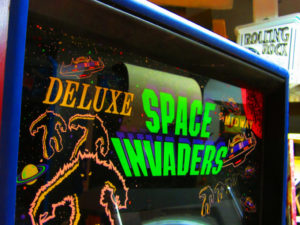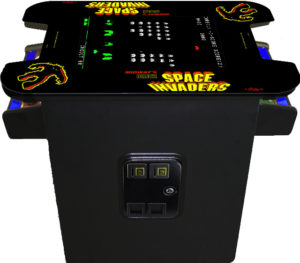
Ever heard of Tomohiro Nishikado? He was probably a significant influence on your life, especially if you are a younger Baby Boomer.
In 1978, when I was eighteen years old, Nishikado created Space Invaders for the Taito Corporation. The game was released in Japan, and proved to be such a hit that it made it over to the US in short order. The lives of teens and younger would never be the same.
Pong was the first video game to see wide release in this country, back in 1974. It was a hit, but graphics technology was improving rapidly. It was time to take electronic gaming up a couple of notches.
Atari’s Tank, released that same year, was the first to show objects that looked “sort of” like what they represented. The next year, Taito released Gunfight, which pitted two cowboys that looked a little more like cowboys than Atari’s tanks looked like, well, you know.
Games kept trickling out, including Atari’s Breakout, released in 1976, designed by a couple of dudes you might have heard of: Steve Jobs and Steve Wozniak. But video games, while popular, were still found mainly in bars, arcades, and bowling alleys.
That changed in 1978. Space Invaders caught the public’s imagination like no video game had yet succeeded in doing. In Japan, the game caused a shortage of yen coins, to which the government responded by quadrupling their production. In the US, its estimated first year revenues were in the hundreds of millions of dollars.

So what was it that made this game so stinking much more popular than its predecessors? Probably a combination of these factors:
- Great graphics. The invaders were the most detailed images yet, and were in “color” (actually colored by a green overlay, red at the top for the spaceships).
- Potential unlimited play for a quarter. You kept playing until your three lives were expended. An ace could play for fifteen or twenty minutes for 25 cents. Novices, myself included, made a much higher contribution to the hundreds of millions of dollars the game raked in.
- Killer sound. Who can forget that bass heartbeat that quickened as the invaders drew ever closer?
- The high score history. If you were the baddest Space Invaders player in town, you had proof, immortalized on the screen!
- Hackability. The geekier gamesters noticed that you could get higher sores for blasting the spaceship by carefully counting your shots.
Space Invaders brought video games to restaurants, convenience stores, waiting rooms, and just about anywhere else that a person might have five minutes to kill.
Atari licensed Space Invaders for their home systems in 1980. The Atari 2600 began being sold with a Space Invaders cartridge included. The idea that you could play your favorite arcade game on television for free doubled the gaming consoles’ sales that year.
Many games came afterward, but most of them followed the trail blazed by Space Invaders, i.e. the features listed above that it pioneered.
So here’s to a creation by a Japanese engineer that brought the video game industry to its glory achieved during the 1980’s, and which, in good part, continues today.